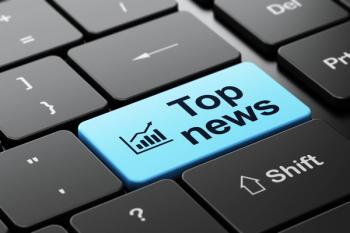
Cannabis Science and Technology
- April 2023
- Volume 6
- Issue 3
- Pages: 18-22
Retrocommissioning Pays Dividends

This column expresses how cannabis facilities that invest in RCx projects can enhance equipment reliability and worker safety, improve conditions for plant growth and development, increase canopy yields, and reduce maintenance costs.
Retrocommissioning (RCx) can unlock your building’s energy potential by optimizing performance of environmental control systems. Achieve energy savings of 10-20% while reducing operational expenses with low- to no-cost improvements that may be incentivized by energy efficiency utilities. This column summarizes how cannabis facilities that invest in RCx projects can enhance equipment reliability and worker safety, improve conditions for plant growth and development, increase canopy yields, and reduce maintenance costs.
As stated above, retrocommissioning (RCx) can unlock your building’s energy potential by optimizing performance of environmental control systems. Achieve energy savings of up to 25% while reducing operational expenses with low- to no-cost improvements that may be incentivized by state and utility energy efficiency programs. Here, we summarize how cannabis facilities that invest in RCx projects can enhance equipment reliability and worker safety, improve conditions for plant growth and development, increase canopy yields, and reduce maintenance costs.
The value of a tune-up is apparent to anyone who has used a car. If driven without regular maintenance, components will wear and tear, filters will get clogged, fluids will run out, and wheels will get out of alignment. The check engine light will come on but may get ignored. Fuel mileage will decrease, mechanical issues will arise, and eventually the engine will not start. No one treats their car this way if they expect to go very far. Getting a regular tune-up is a practice to ensure long equipment life, a comfortable ride, and efficient operation.
Smart cannabis businesses tune up their cultivation and production systems for the same reasons. Tuning building systems can involve leveraging data from controls and automation systems to identify problems and optimize operations at low or no cost. When a building is constructed or renovated, a verification process called
Figure 1 describes the kinds of energy system deficiencies that can be uncovered from RCx studies. Energy benefits can include reduced energy use and lower energy costs. Non-energy benefits include improved operations and maintenance, safer conditions for staff, lower risk of equipment failure, and optimized environments for people, plants, and products.
Tuning and RCx will provide the best return on investment for businesses with multiple facilities like multi-state operators (MSOs), operators of larger buildings, buildings with high energy use, and buildings with higher utility costs. Tuning is especially important for operations that have been up and running for several years in buildings that have not been commissioned before or have not been evaluated in some time.
Prioritize tuning if:
- Control systems are in good working condition
- Hardware includes digital controllers, actuators, and thermostats
- Systems have been updated within the last 5-8 years
- Automation system controls major air handling units and central plant equipment, such as chillers and boilers
- Trend data for multiple harvests is available for analysis
If a building is older and systems have not been updated, it may prove challenging to leverage data from controls systems. In these cases, RCx engineers can use utility data, design drawings, equipment schedules, control sequences, history of occupant complaints, and conversations with maintenance staff to evaluate the performance of components and identify efficiency projects while also recommending repairs, replacements, and upgrades. Retrocommissioning can involve more capital investments, but after improving functionality and availability of data, low-cost tuning measures become much easier.
There are four main types of tuning measures applicable to any kind of building that when applied together, can result in annual energy savings of 5–25%:
- Turn it off
- Turn it down
- Avoid simultaneous heating and cooling
- Reduce infiltration and outdoor air
Data collected by the Pacific Northwest National Laboratory (2) at federal General Services Administration (GSA) facilities from 2011–2021 showed total combined savings of 13.4% at more than 80 facilities. Figure 2 shows estimated allocations of the savings from the four principle tuning categories.
Cannabis businesses can apply the four tuning principles in the following ways.
The start of any tuning journey is shutting things down more often. Turn systems off when not needed by scheduling equipment, programming horticultural lighting controls, and tweaking start and stop times for heating, ventilation, and air conditioning (HVAC) equipment based on occupancy schedules.
Turn systems down by adjusting setpoints for lighting and HVAC systems. Dimming horticultural lighting systems or increasing target grow room temperature reduces cooling load. Save energy with reset schedules for water temperature, fan static pressure, and pump differential pressure so motors modulate instead of running at constant speed.
Avoid simultaneous heating and cooling by limiting standalone dehumidification systems rejecting heat back into grow rooms, which cause cooling systems to kick on at the same time. Review sequences of operation to understand how HVAC systems work together to achieve target environmental conditions and minimize fighting, which wastes energy. Common RCx measures include supply air temperature reset and widening deadbands (the range of acceptable temperatures and relative humidity percent) so HVAC equipment runs less often.
Most cannabis facilities already limit the introduction of outdoor air, but this is the last place to look when tuning and retrocommissioning buildings. If operating in a leaky building, outdoor air enters the building via infiltration. Conditioning outdoor air requires energy. Some HVAC systems bring fresh air into the building for human-occupied spaces. Understand how HVAC systems move air through the building and exchange heat with production spaces. Tuning activities can include building pressure control, demand-controlled ventilation, exhaust fan control, and modifications to outside air damper operation.
Retrocommissioning cannabis facilities is crucial to keep mission-critical cannabis production systems performing efficiently and effectively. Work with engineers to perform tuning activities and identify energy-saving measures. Because RCx studies can uncover so many efficiency projects, some state and utility energy efficiency programs offer financial support or technical assistance. In some regions, businesses can have experts offer guidance while utilities cover 50% of the cost of the investigation and offer cost-sharing based on energy savings for implementation. States with legal commercial cannabis markets such as
References
- Schimelpfenig, G. A Shipbuilding Concept That Can Save You Money
https://www.cannabisbusinesstimes.com/article/commissioning-cannabis-cultivation-equipment-facility-design/ . https://www.pnnl.gov/projects/best-practices/re-tuning-buildings#Retrocommissioning .- AESAP Homepage
https://www.agenergysavings.com/ . - Cannabis Resource Optimization Program (CROP)
https://energyoffice.colorado.gov/clean-energy-programs/cannabis-resource-optimization-program-crop . - Custom Incentives
https://www.masssave.com/en/business/programs-and-services/custom-incentives-and-technical-support/custom-incentives . - ERI Offers A Suite of Energy-related Services to Cannabis Cultivators
https://nut.sh/ell/forms/318987/eP46om .
About the Columnist
Gretchen Schimelpfenig is a Senior Energy Engineer at Energy Resources Integration, LLC where she implements energy efficiency programs and provides direct consulting services. She is the former Technical Director of the Resource Innovation Institute and manager of the organization’s Technical Advisory Council. She authored RII’s Lighting, HVAC, and Facility Design & Construction Best Practices Guides for Controlled Environment Agriculture and the Lighting, HVAC, and Controls Best Practices Guides for Cannabis Cultivation. She has worked with partners like the University of Vermont to optimize commercial and industrial buildings, including greenhouses and controls systems used for academic research on hemp and other cultivars. She has a B.S. in Architectural Engineering from the University of Wyoming and an M.S. in Civil Engineering from Stanford University. She is a licensed Civil Professional Engineer in California and Vermont.
How to Cite this Article:
Schimelpfenig, G., Retrocommissioning Pays Dividends, Cannabis Science and Technology, 2023, 6(3), 18-20.
Articles in this issue
over 2 years ago
Extraction of Acidic Cannabinoidsover 2 years ago
2023 Cannabis Science Conference Spring AgendaNewsletter
Unlock the latest breakthroughs in cannabis science—subscribe now to get expert insights, research, and industry updates delivered to your inbox.




